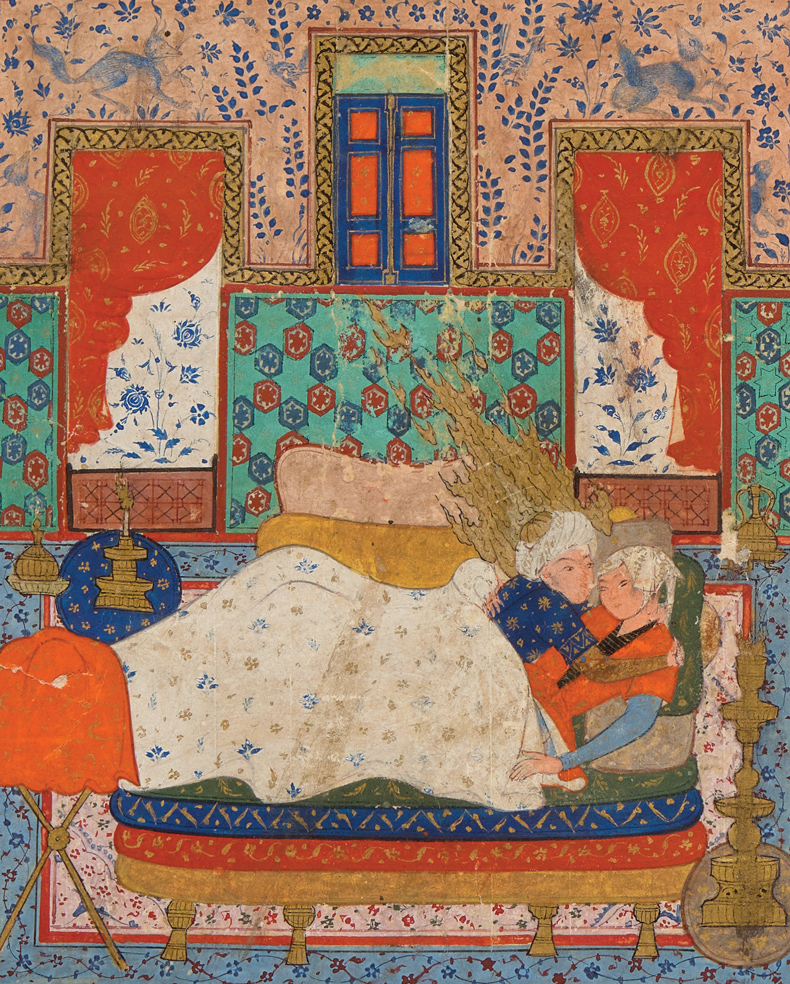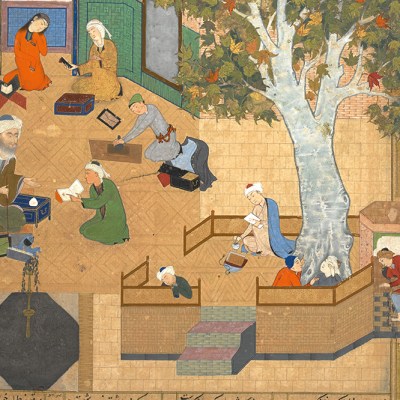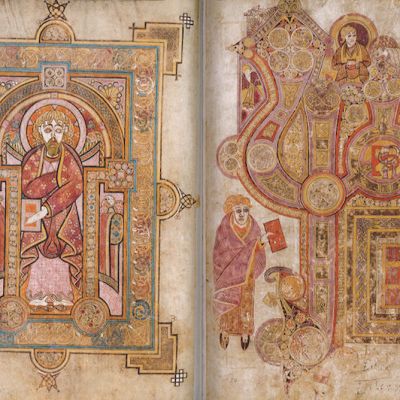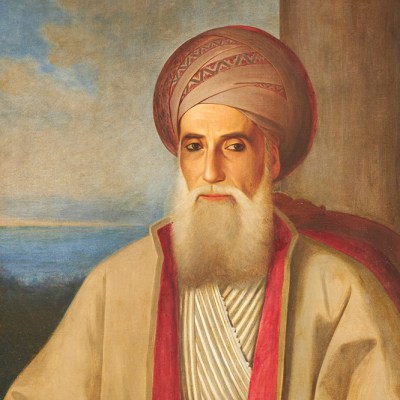From the October 2023 issue of Apollo. Preview and subscribe here.
Romance and intrigue, comedy and mysticism: the story of Yusuf and Zuleikha has everything. As a boy, I was mesmerised by what the Qur’an describes in the Yusuf chapter as ‘the best of stories’. The noble boy is mistreated by his brothers and ends up enslaved by a rich Egyptian. The lady of the house, Zuleikha, takes a fancy to him, locks the palace doors and tears his shirt as he evades her grasp. Imprisoned, he frees himself by interpreting dreams for Pharaoh and all ends happily as he is united with a penitent Zuleikha.
Like the Joseph story in Genesis and Jewish Midrash, the Qur’an teaches a conventional moral about a ‘scheming’ temptress persecuting a righteous prophet. But the version I heard at the mosque also drew from the Persian poets who gave the tale a quite different flavour. In the masterful 15th-century work composed by Jami in Herat, modern-day Afghanistan, Zuleikha becomes the central character in an erotic Sufi allegory – and a favoured subject for patrons and artists.
The shirt tearing was famously depicted by Jami’s contemporary Behzad, who traps the couple in a gorgeously claustrophobic palace. But I have chosen a detail from a less well-known illustration, found in a manuscript of Jami’s poem anonymously copied and illustrated in c. 1580 in Shiraz in Iran and now easily accessible at the British Library: the moment the allegory is made flesh and Yusuf and Zuleikha make love.
You don’t often see sacred figures having sex in Islamic paintings and there are some surprisingly suggestive details: Yusuf ’s erect flaming nimbus; the shape of his buttocks outlined under the sheet; Zuleikha’s arm hanging in limp ecstasy. But I find myself most drawn to the lovers’ locked gazes. This is when, as Jami says, ‘the curtain before Zuleikha’s eyes was finally torn asunder; and a ray from the sun of Truth struck her with such overwhelm- ing brilliance, that Yusuf was lost in it like a mote in a sunbeam.’ In finally possessing Yusuf, she sees beyond him to a greater beauty.
Let’s zoom out a little. At the poem’s start Jami advises that ‘If you would be free, be a captive to love. If you wish for joy, open your breast to the suffering of love.’ Zuleikha’s example shows the path. Before she meets him, she sees Yusuf in a dream and falls for him desperately. In the Shiraz manuscript, she sits forlornly in a blue dress and orange cloak being hugged tightly by her nurse while her maids look on in despair.
The now-married Yusuf and Zuleikha in an illustrated manuscript of a poem by Jami (1414–92) made in Shiraz, Iran, in c. 1580. British Library, London. Photo: © British Library Board. All rights reserved/Bridgeman Images

This domestic scene contrasts with the next image, in which her Egyptian marriage is arranged entirely by men. Jami is an unlikely feminist but his narrative is undoubtedly driven by female desire. In a scene beloved by many painters, Zuleikha shows off her handsome slave to her maids, who are so astonished they stop cutting fruit and instead slice open their hands. But perhaps this emphasis on Yusuf’s beauty has more to do with Jami’s homosocial world: the poet’s biographer Hamid Algar notes that he once became infatuated with a Herati youth and ‘pined away inconsolably for a decade and a half’. It is likely that the object of his affections was male.
The rejected Zuleikha sends Yusuf to prison but is plagued with regrets. Just like the heroine in Robert Henryson’s Testament of Cresseid, written around the same time, she prematurely ages and becomes a beggar: ‘The dust underfoot was her bed, and a brick was her pillow.’ She puts herself in the path of the newly-elevated Yusuf but he does not notice her. Only when she smashes the idol she has been worshipping can she be reunited with Yusuf, who miraculously restores her looks and marries her.
Jami’s romance embodies Islam’s paradoxical attitude towards images. When trying to seduce Yusuf, Zuleikha decorates the palace with titillating paintings – ‘Zuleikha kissing Yusuf on the lips; Yusuf loosening Zuleikha’s girdle.’ These are both inducements to lechery and prefigurations of lawful bliss. After the marriage, Yusuf builds his new bride a gilded pavilion ‘decorated with hundreds of breathtaking miniatures’. Perhaps the illustrator imagined our detail as one of Zuleikha’s racy images that now grace the pavilion? Lust is reborn as love, adultery reframed as marriage, youthful beauty restored and even virginity repaired – Zuleikha’s first husband, she assures Yusuf, was impotent.
Most of all, devotion is rewarded: not only Zuleikha, who gets her man as well as access to higher spiritual truths, but also that of the nurse. Surrounding the lovers there are sleepy soldiers guarding the pavilion, turbans unwound and weapons resting, while on the roof a woman leads a child by the hand – recalling the lost boy Yusuf, anticipating the couple’s offspring. Sitting alone in a high window, her hand tucked above her upright knees, the nurse watches the lovers with her own calmly satisfied gaze.
From the October 2023 issue of Apollo. Preview and subscribe here.


